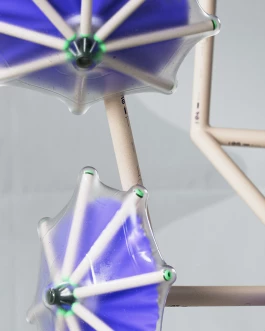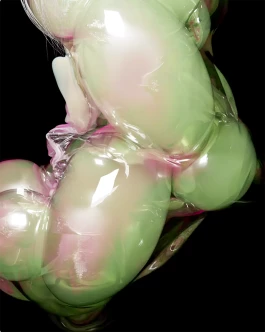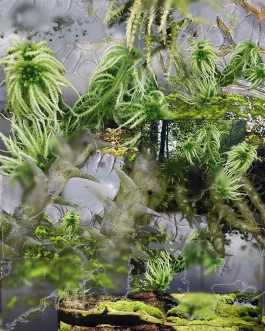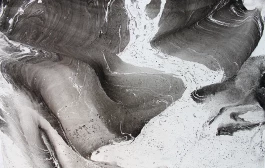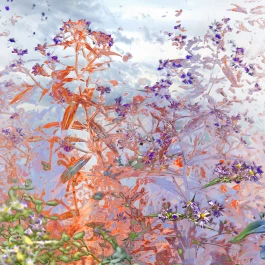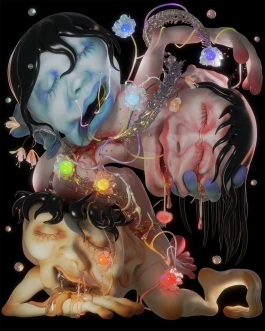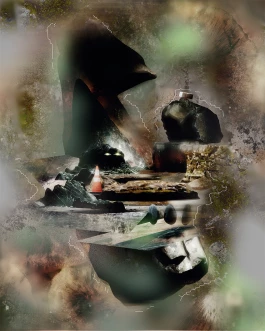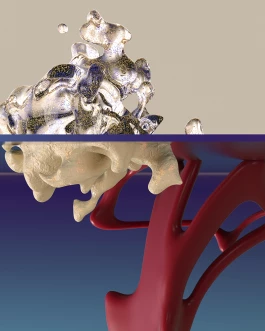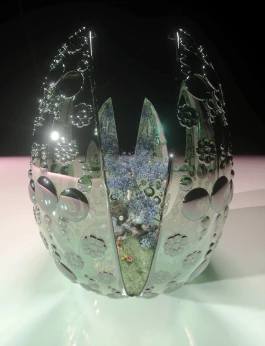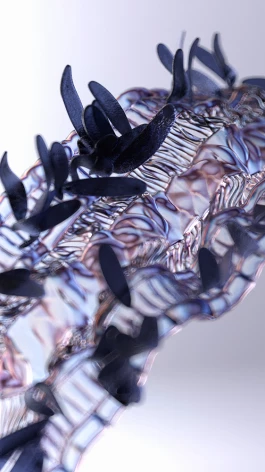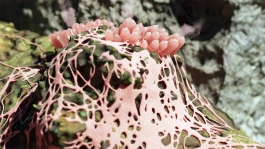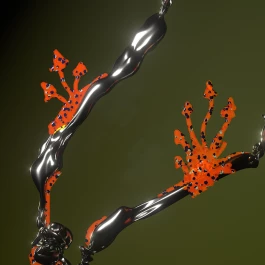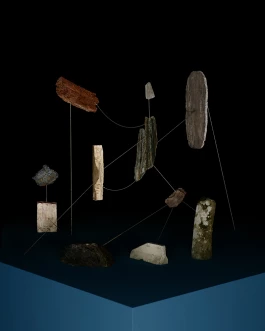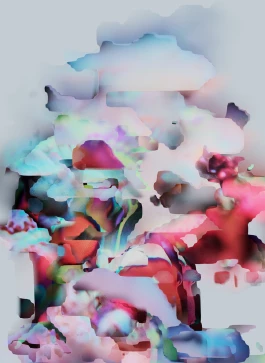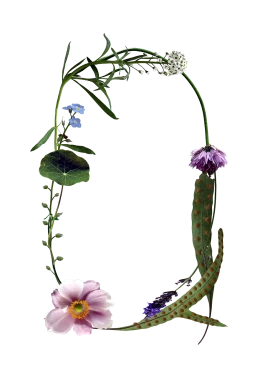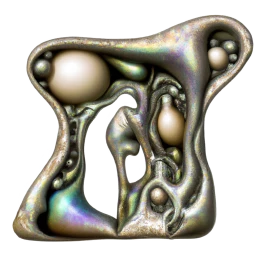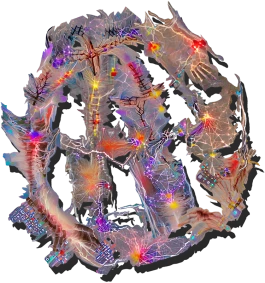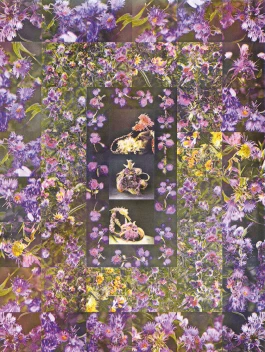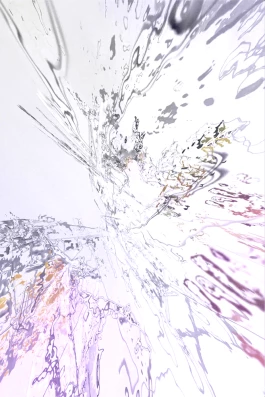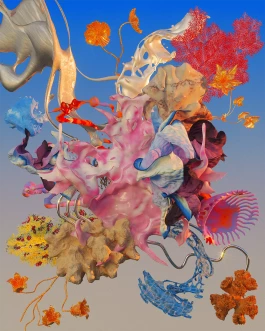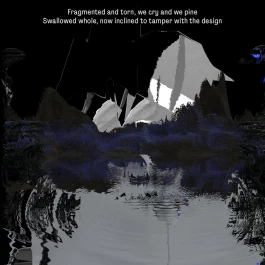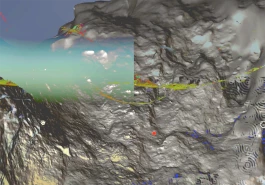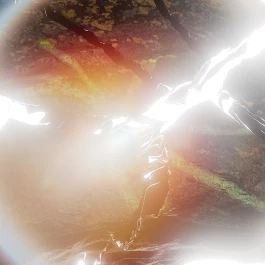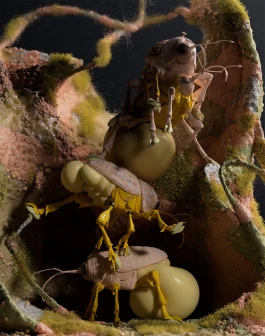
A micro-landscape shaped of hybrid fungi and small vegetation, the color range of which seems to both mimic and diverge from what may be perceived as natural.
Four cyborg insects, fitting colorwise to their environment, seem to have accomplished a strangely balanced position. Is this a eusocial* action or a computational glitch? Eusocial insects exhibit complex and sometimes puzzling behaviors. How will behaviors like these evolve in an ecosystem where nature and artificiality continue to merge?
Merger G3-G4 is a visual exploration of how certain characteristics and behaviors of species may look like in such a hypothetical symbiosis. For this project, 2.2 reimagines future adaptations of camouflage and eusociality.
* eu·so·cial ˌyü-ˈsō-shəl. : living in a cooperative group in which usually one female and several males are reproductively active and the nonbreeding individuals care for the young or protect and provide for the group. Eusocial termites, ants, and naked mole rats. Eusociality.
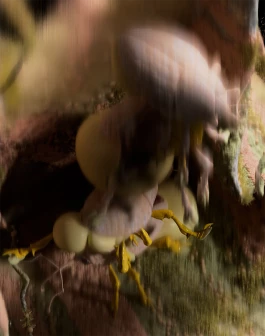
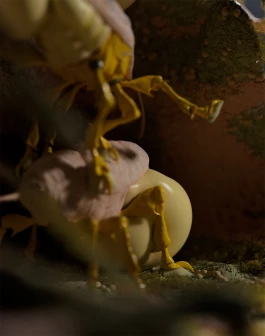
Case Study / Behind the Scenes
1. Designing the cyborg insects
The reason that eusociality was our initial point of interest is not only because it is considered to be a wonder of evolution and a reminder of how intelligence can take completely different forms inside the natural realm, but also because eusociality questions our perception of individuality in similar ways as artificiality does.
Our main reference for designing our protagonists was a nut weevil, also known as Curculio glandium from the genus Curculio, which comprises seed beetles. The nut weevil is an insect that does not exhibit eusocial activity in real life, so it is unclear if eusociality could be the result of natural or artificial evolution, or a combination of both. Curculio glandium attracted our attention because it combines common and unusual beetle-like features.
Eusocial creatures exhibit a wide range of complex characteristics in their social structure and behavior. We decided to depict a position that refers to the bridges (and ladders) the ants usually create by placing one on top of the other. This is how we achieved both a conceptual connotation and an almost choreographic general composition.
Despite the fact that the final result might imply a tightly premeditated art direction, we consider our workflow and decision making to be process-based, meaning that our general research is more often reflected in spontaneous acts and experimentation that occur during the process rather than the simple execution of a concept. In this way, we maintain an abstracted approach to our themes and create clear paths for open interpretation. A good example of this approach is the bubble-shaped feature of the insects, which differs between individuals. This is an element with a very vague function within the overall narration, but which simultaneously fuels our imagination.
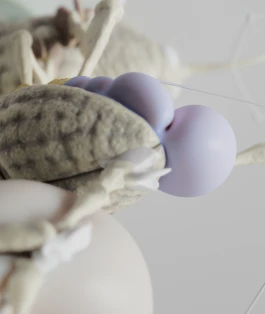
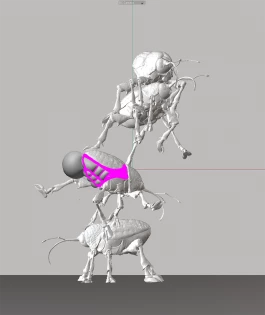
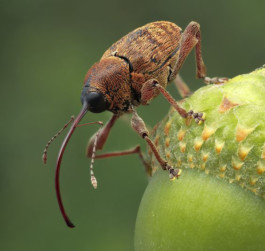
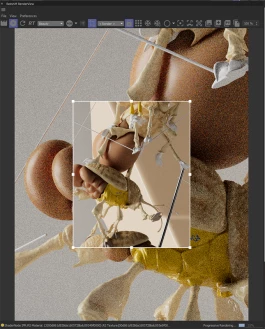
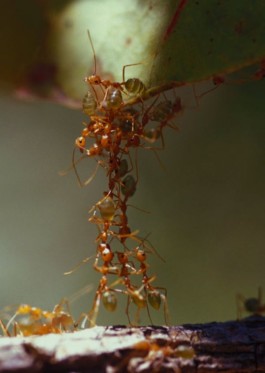
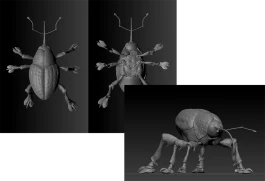
2. Color palette and overall ambience
We perceive camouflage as the outcome of a harmonious dialogue between habitat and creature. A dialogue that occurs in parallel evolution. Therefore, to our hypothesis, camouflage reflects a coexistence between nature and artificiality in harmony. An artificiality that has been detached from human-centered activities and claims a role that contributes to the balance of the ecosystem.
In order to create a color palette that did not simply merge the insects with their surroundings, but which also gives the impression of the coexistence of nature and artificiality, we decided to test several color combinations on our cyborg insects and from these we created their habitat. We were also interested in the ambience of an interior, terrarium-like, environment. So, alongside the color range of the composition, we tested several lighting alternatives.
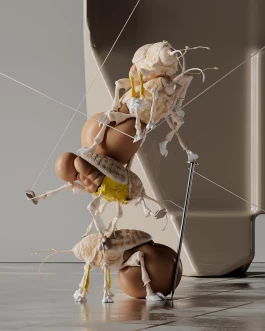
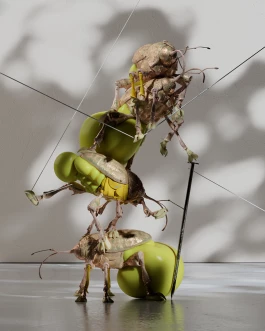
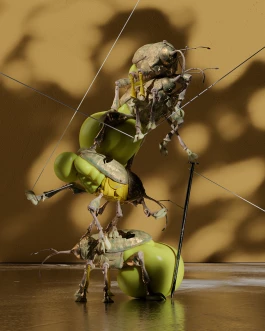
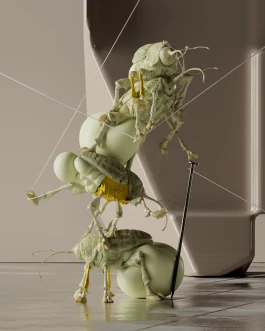
3. Landscape
We are interested in experimenting with new mediums and ideas, while at the same time expanding our technique to the tools we have already acquired. At the basis of our design work is a constant dialogue between procedural and non-procedural approaches. More specifically, for the landscape we designed the basic structure in ZBrush and created all the elements of this micro-ecosystem procedurally in Cinema 4d. For texturing we followed a similar approach to those of the color range. We aimed for a landscape rich in different textures but relevant to those of the insects.
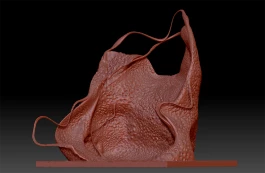
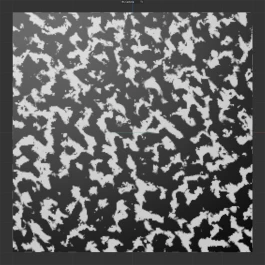
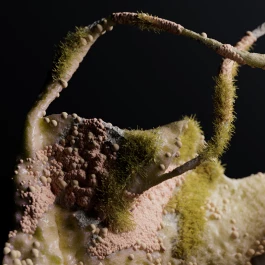
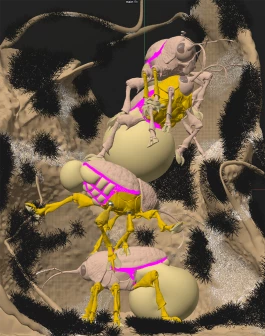
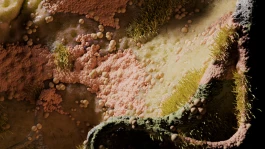
2.2 is the newly-formed experimental design duo of Alexandros Mavrogiannis and Konstantinos Lianos, based in Athens, Greece. Alexandros Mavrogiannis is a Multidisciplinary Artist and Visual Director working between CGI films, virtual photography and digital sculptures. Using exclusive digital tools is aiming to conceptualising the essence of material through imagery. Konstantinos Lianos is an interdisciplinary visual artist producing works that often question the digital/material dualism as they focus on the ways in which the digital dimension structures new materials and vice versa. The two creators have worked together occasionally for a decade on various personal projects, thus establishing a deep interpersonal understanding of their creative processes.

